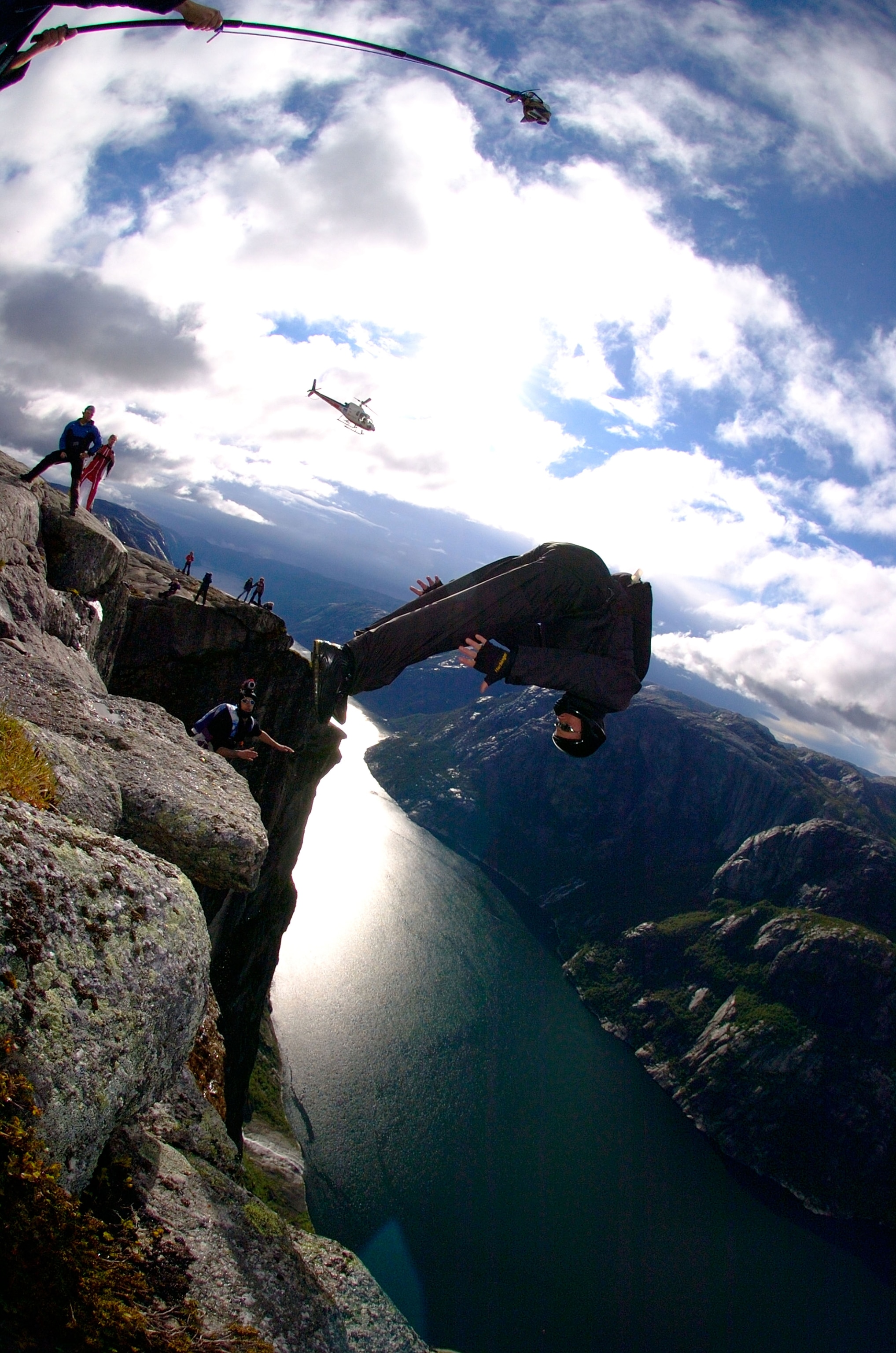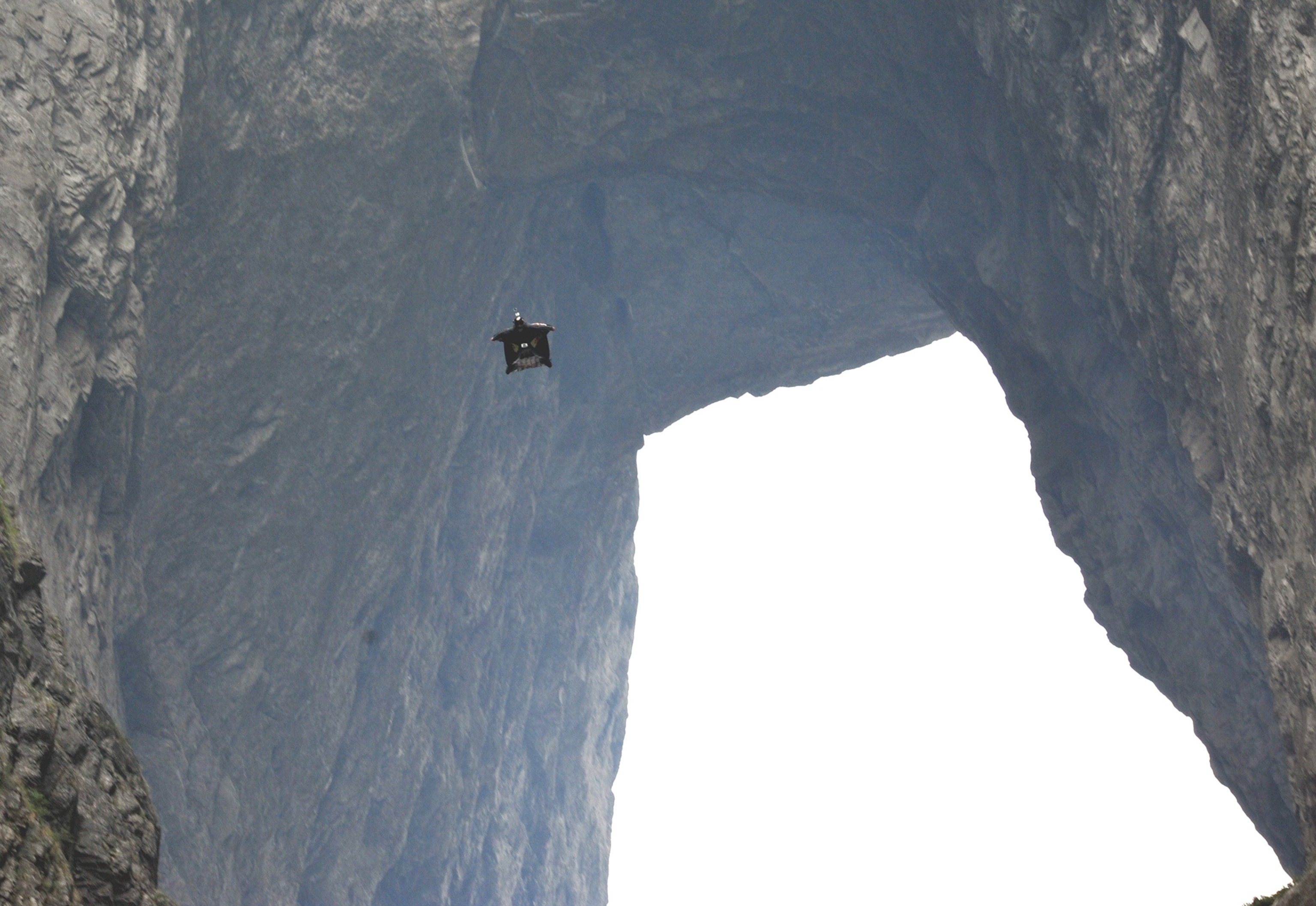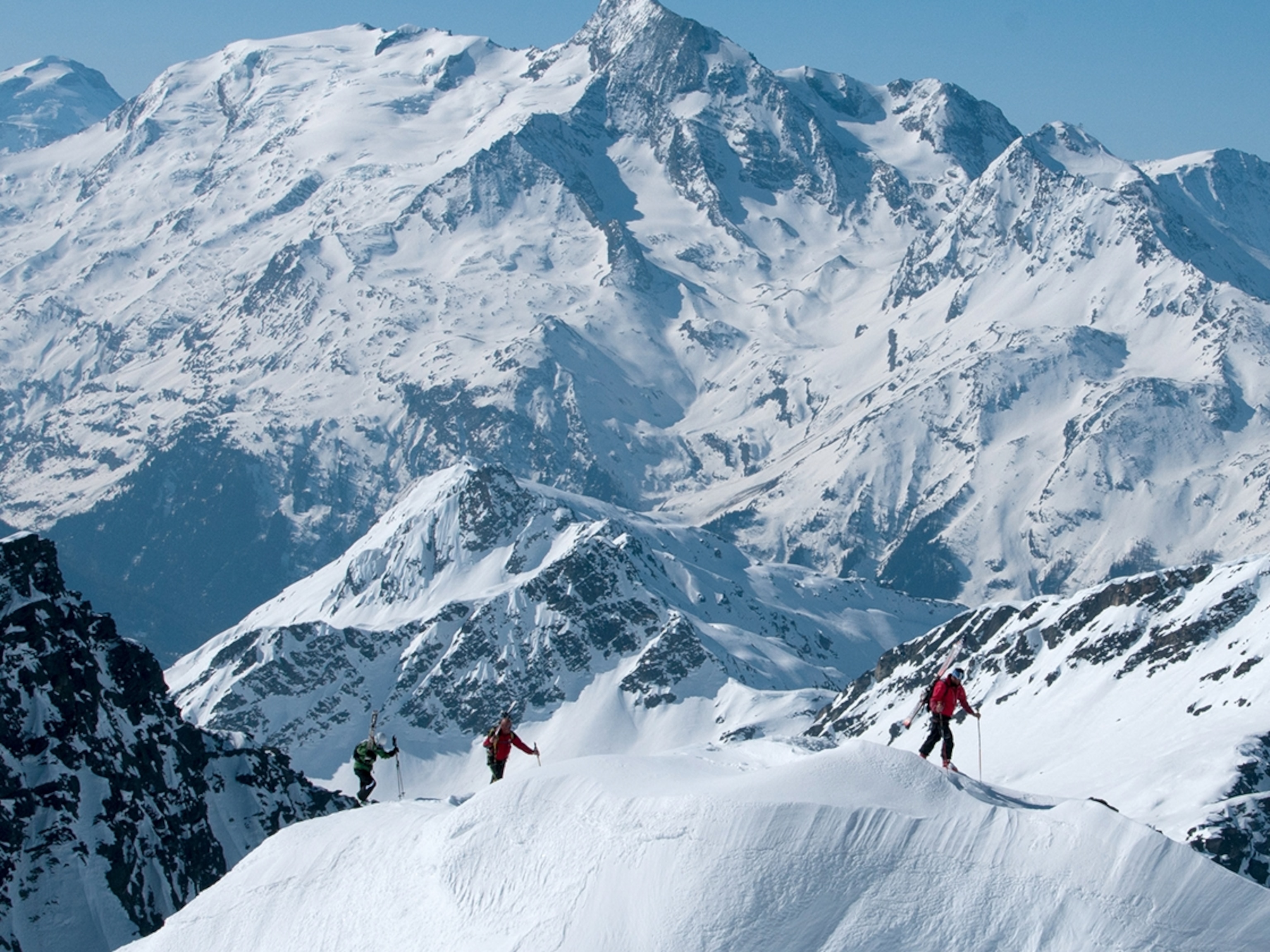
Why This Daredevil Won't Quit One of the World's Deadliest Sports
Despite massive risks and a rising death toll, a group of extreme athletes continue to BASE jump in wingsuits. Jeb Corliss tells us why he's stuck with the dangerous endeavor.
When I started skydiving at age 18, wingsuit flying had been a dead discipline. Early on they’d used broomsticks and tarps, and it killed so many people. But in the 1990s, French skydiver Patrick de Gayardon got the technology they use for parachutes and created a wingsuit that was safe to fly. In 1998 I saw one in Italy built out of a wetsuit and convinced the guy to build me an all-black wingsuit. It was right at the beginning of the modern day wingsuits.
My very first wingsuit-flight base jump turned into a proximity flight. We had the idea we’d be able to jump off a cliff and fly over the open valley. The problem was if you didn’t make it over the cliff ledge, you’d impact on it. I jumped, but there was no way I was going to make it over the ledge so I turned left, into the crack that ran through the cliff. I was 20 feet away from the rocks—it was crazy, stupid close.

There is something to be said about flying. It’s an almost uncontrollable urge. It’s so powerful that people are willing to die for it. It’s highly risky, with an incredibly small margin for error. We’re humans, and we make mistakes. If you make a mistake in a wingsuit, you can die. No one gets into wingsuit proximity flying because they think it’s safe. You can’t even use the word “safety” in the same sentence. It’s “dangerous,” “really dangerous,” and “stupid dangerous.” Arguably, it’s the most lethal sport on Earth. (Read more: Why Are So Many BASE Jumpers Dying?)
Learning to Fear Flight
At the beginning, I didn’t know enough to be scared. The more I do it the more frightened of it I become. Wingsuit flying lulls people into a false sense of security. The only scary part is stepping off. Once you have a good exit and the wingsuit starts flying, you get this overwhelming sense of control, and you feel like you could hit any leaf on any tree you want. But the truth is you don’t and you can’t.

Overconfidence is wiping people out. We’re falling at 90 to 150 miles per hour, and if you make a mistake it’s over. I was one of the few people lucky enough to make a mistake—I impacted flat on solid granite going over 120 miles per hour—and not die. That experience woke me up. We’re not really designed to be doing this. We’re the first generation of flying squirrels, trying to jump tree to tree to fly—and a lot bounce down to the ground. A big percentage of the creatures trying to evolve into something new die. That’s what evolution is.
If you’ve been a proximity-flying wingsuit flyer for five years, you’ve made a mistake that should have killed you and you got lucky. Every single person in this sport has made a mistake that should have killed them and got lucky.
As I'm getting older I’ve started seeing wingsuit flying as a bright burning flame and pilots doing proximity flying as moths—you don’t understand why they’re flying into it. The moths can’t control themselves. That’s what happens with proximity fliers. (Read more: Flying with the World's Most Deadly Sport)
Staying in the Suit
Since the beginning I've been wrestling with quitting. In 2003, I was with my friend Dwain Weston when he impacted on a bridge in Colorado. I landed covered in his blood next to his leg. It had a profound impact on me. For six months I questioned, “Why are we doing this?” I came to the conclusion that I could stop doing all dangerous things and I would still die.
If you’re lucky, you’re going to have a passion for something. If you’re really fortunate, you’ll die in making that purpose in life a reality. A lot of people say you’re wasting your life, and I say why don't you tell me a good way to die? When Dwain died I realized these things enrich my life. When you give up on things is when you fail.
In February 2010, I was in South Africa and I set up a balloon target. I couldn’t see the ledge I hit—it was optical illusion. I'm the only person to survive a terminal bounce on solid granite. You can go on my YouTube page and see it. It was shot from 16 different camera angles.
I’ve gotten beaten up and broken and watched all my friends die. I've learned how to walk again. I've spent three full years of my 20-year career recovering from injuries. I've taken incredibly hard hits—things that would have made any rational, sane human give up.

- National Geographic Expeditions
Steering The Human Race Higher
Once you see person fly a wingsuit between trees and into a crack in the earth, you’re going to do it. Once an animal can see what’s possible, they try to do it. Then if they survive long enough to reproduce, their kids see it. At the end of the day these are the kinds of people who push human species forward, and it’s going to be what helps us survive. Taking risks is important when it comes to evolving. If no one ever took risks, we’d still be in caves playing with fire.
Wingsuits are already going to places I never believed possible. Every year they come up with something that goes a little further, a little faster. I don't know when it happened, but at some point I became the old conservative guy. I love my life and family. I still wingsuit fly; I'm just backing off. I don't need to be five feet from things. I can be 20 feet away.
The reason I was into wingsuit was I felt we were innovating. Now I feel it’s gone as far as it can go. I don't mind dying doing something special and unique—but dying doing something I've done 100 times before and everyone else is doing? That’s boring. I'm into jet packs now. That’s what I want to become a test pilot for. You want to break some eggs? I’ll break some eggs. Put me in the jet pack. I don't care if you melt my brain. You wouldn’t put someone smart or healthy and young there—put someone broken, old, and tired there.
You have to be pushing some sort of boundary, making the human species evolve. If you are, well then you’ll do whatever it takes to make these things happen.







